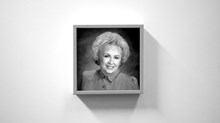Schwenckfelders have always been different. When Roman Catholics and Lutherans battled over the pieces of modern Germany during the Reformation era, Schwenckfelders did not fit in either camp, so they experienced persecution from both sides. From 1526 to 1895, Schwenckfelders, unlike almost all other Christian groups, did not partake of Communion. Today, whereas most Americans celebrate Thanksgiving in November with turkey, mashed potatoes, and pumpkin pie, Schwenckfelders celebrate in September (this weekend, in fact) with bread, butter, and apple butter. Ironically, all of this has been done in the name of a man with a passion for Christian unity.
Born into a noble Silesian family in 1489, Caspar Schwenckfeld von Ossig was just slightly younger than Martin Luther. He encountered Luther's writings as a young man and eagerly joined the campaign for reform. He even traveled to Wittenberg in 1525 to meet with Luther and his colleagues.
On several points, though, Schwenckfeld thought that Luther had staked out a position too far removed from traditional (Catholic) belief. Luther wanted a radical shift; Schwenckfeld sought a "Middle Way."
Specifically, Schwenckfeld questioned Luther's understanding of faith and works. The medieval Catholic church, following Galatians 5:6, taught that people are justified by faith "working through love" (NKJV). Luther, following Ephesians 2:8, taught that people are justified by faith alone.
Schwenckfeld agreed with Luther that the medieval church overemphasized works and wrongly pushed certain formal practices, but he hesitated to jettison works entirely. Surely, Schwenckfeld thought, good works must have some purpose and meaning—otherwise, what would be the point of striving toward a godly life? Unfortunately, Reformation-era conflicts did not leave room for a "Middle Way." Both Catholics and Lutherans accused Schwenckfeld and his followers of collusion with the enemy.
Schwenckfeld also disagreed with Luther, and pretty much everyone else in the sixteenth century, about Christ's body and its relationship to the Communion elements. Schwenckfeld's unusual (some would say heterodox) ideas on this topic are too complicated to go into here, but their effect on Schwenckfeld and his followers was remarkable.
Wrong doctrine taints Communion, Schwenckfeld wrote, but so does a wrong attitude. Open hostility toward another group of Christians constitutes a bad attitude. Therefore, as long as Catholics, Lutherans, and other emerging Protestant groups were accusing each other of profaning Communion, they were all profaning Communion. In other words, there must be no fighting at the Lord's table.
Schwenckfeld could not get all of the factions to agree about Communion, so he declared that he could no longer partake of it. Schwenckfelders maintained this stance, called the Stillstand, until the eve of the twentieth century.
As their obscurity might suggest, Schwenckfelders did not get very far in their quest to unite squabbling Christians. In the 1730s, after some 200 years of political setbacks and periodic persecution in Europe, the tiny Schwenckfelder remnant fled to religiously tolerant Pennsylvania. The largest group of immigrants, 40 families, arrived in Philadelphia September 22, 1734. Two days later they celebrated their first Gedaechtnisz Tag, the September Thanksgiving. Though fewer than 3,000 people in a handful of Pennsylvania congregations still observe it, it is the oldest continuous Thanksgiving tradition in America.
Caspar Schwenckfeld did not set out to create just another eddy in the Christian stream. He considered himself and his followers not a separate church, but "Confessors of the Glory of Christ"—a designation all Christians could uphold. He wrote movingly of his desire "that we may grow in the peace, love, and unity which are in Christ, and live and walk in the fear of God." The task was, and remains, harder than he could have imagined.
Elesha Coffman is former managing editor of Christian History.
Copyright © 2002 by the author or Christianity Today/Christian History magazine.
Click here for reprint information on Christian History.

Support Our Work
Subscribe to CT for less than $4.25/month




























